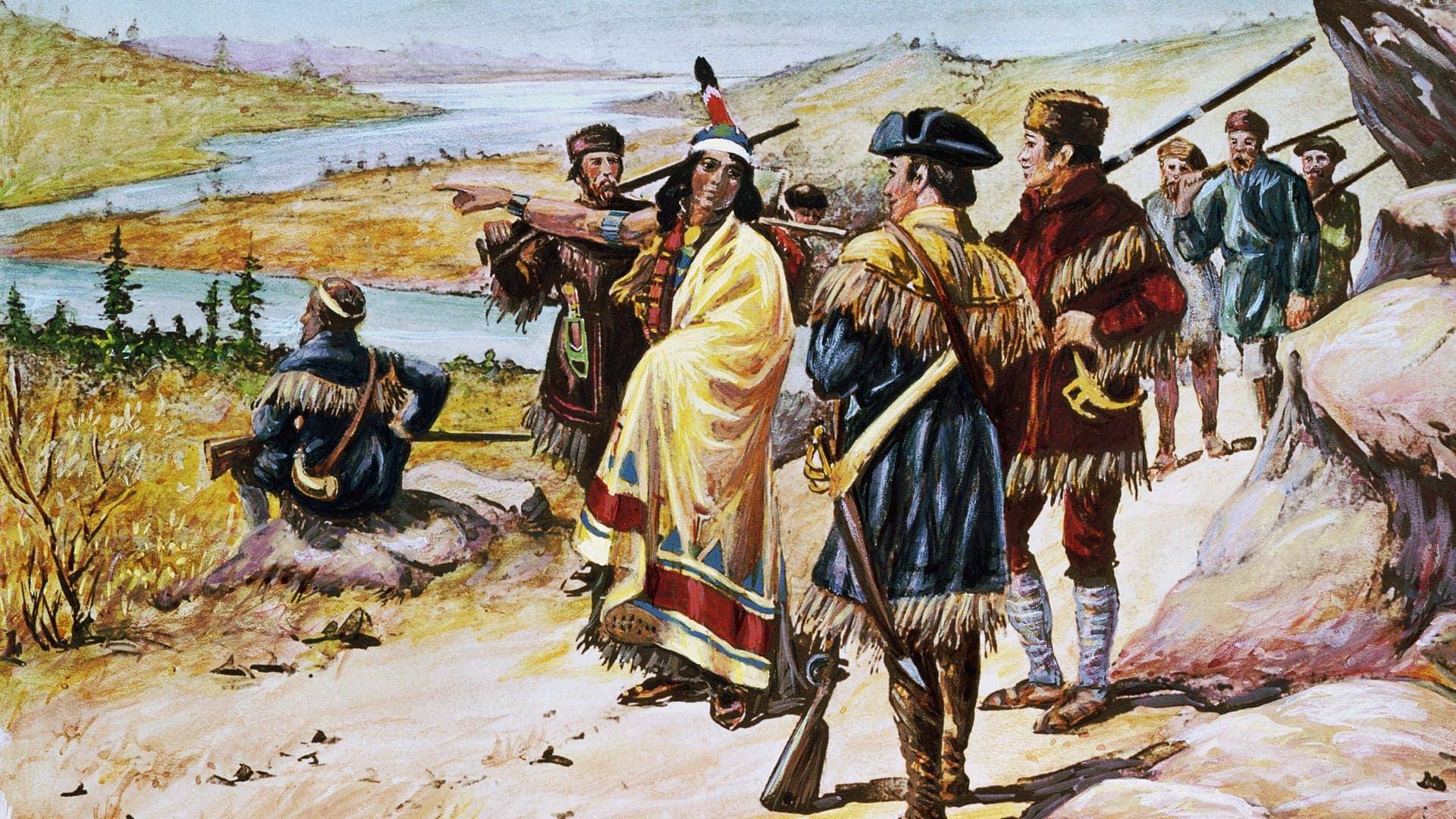Sacagawea, the Shoshone interpreter and guide to the Lewis and Clark expedition, gives birth to her first child, Jean Baptiste Charbonneau.
Meriwether Lewis and William Clark first met the young Sacagawea while spending the winter among the Mandan tribe along the Upper Missouri River, not far from present-day Bismarck, North Dakota. Still only a teenager, Sacagawea was the wife of a French-Canadian fur trapper, Toussaint Charbonneau, who had purchased her from Hidatsa kidnappers the year before. The Hidatsa had taken Sacagawea from her homeland along the Continental Divide in modern-day southwestern Montana and southeastern Idaho, where she was the daughter of a prominent Shoshone chief. Viewing such captives as little more than enslaved workers, the Hidatsa were happy to sell Sacagawea and another woman to Charbonneau, who used them as laborers, porters and sexual companions.
That winter, Lewis and Clark hired Charbonneau as an interpreter for their projected expedition to the Pacific and back, provided he agreed to bring along his young wife. Lewis and Clark knew they would have to obtain horses from the Shoshone to cross the Continental Divide, and Sacagawea’s services as an interpreter could prove invaluable. Charbonneau agreed, and she became the only woman to join the Corps of Discovery.
Two months before the expedition was to depart, Lewis and Clark found themselves with another co-traveler, who later proved useful in an unexpected way. On this day in 1805, Sacagawea went into labor. Lewis, who would often act as the expedition’s doctor in the months to come, was called on for the first and only time during the journey to assist in a delivery. Lewis was anxious to ensure his new Shoshone interpreter was in good shape for the arduous journey to come, and he later worriedly reported: “her labor was tedious and the pain violent.” Told that a small amount of the rattle of rattlesnake might speed the delivery, Lewis broke up a rattler tail and mixed it with water. “She had not taken [the mixture] more than ten minutes before she brought forth,” Lewis happily reported.
Named Jean Baptiste Charbonneau, the cries of the healthy young boy announced the arrival of a new member of the Corps of Discovery. No one, it seemed, contemplated leaving Sacagawea and her infant son behind—when the party set out up the Missouri in April 1805, Sacagawea carried Jean Baptiste on her back in an Indian cradleboard. Nicknamed “Pomp” or “Pompey” by Clark, who developed a strong attachment to the boy, Jean Baptiste accompanied his mother on every step of her epic journey to the Pacific and back.
Mother and son both were invaluable to the expedition. As hoped, Sacagawea’s services as a translator played a pivotal role in securing horses from the Shoshone. Jean Baptiste’s presence also proved unexpectedly useful by helping to convince the Indians the party encountered that their intentions were peaceful-no war party, the Indians reasoned, would bring along a mother and infant.
When the Corps of Discovery returned east in 1805, Charbonneau, Sacagawea, and Jean Baptiste resumed the fur-trading life. Little is known of Sacagawea’s subsequent fate, though a fur trader claimed she died of a “putrid fever” in 1812 at a Missouri River trading post. True to a promise he had made to Sacagawea during the expedition, Clark paid for Jean Baptiste’s education at a St. Louis Catholic academy and became something of an adoptive father to the boy. A bright and charismatic young man, Jean Baptiste learned French, German, and Spanish, hunted with noblemen in the Black Forest of Germany, traveled in Africa, and returned to further explore the American West. He died in 1866 en route to the newly discovered goldfields of Montana.

